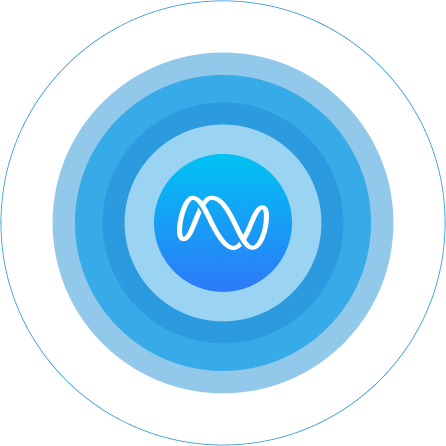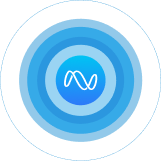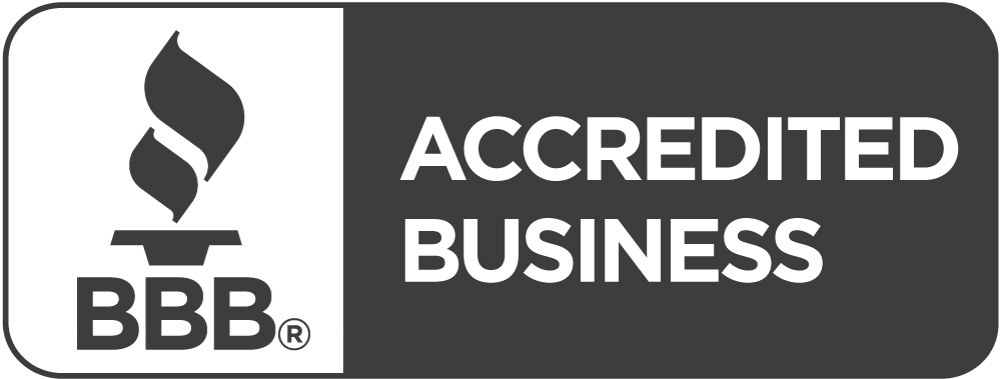An effective outbound calling strategy can improve your bottom line. Read on to learn how an excellent outbound call strategy can help your business grow.

Whether you’re the CEO of a national outbound calling center or simply looking to find strategies to bolster your office’s client communications, crafting an effective and efficient outbound calling strategy can improve your business relationships and streamline your day-to-day operations.
The key to any successful outbound calling strategy is to ensure your receptionists are personable, knowledgeable, and patient. However, you’ll also want to support your staff with coherent materials and resources to systematize your enterprise.
In this guide, we’ll discuss 8 tips to bolster your outbound call center best practices, and what factors to consider when blueprinting your outbound call strategy.
What is Outbound Calling?
Outbound calling is the frontline of your business’ interaction with the outside world. But, what is an outbound call center, you may ask? At its core, it’s a staff of people calling potential customers or current customers to achieve a given goal (making sales, appointments, or conversions). However, effective outbound calling is a lot more involved than that.
Outbound calling serves multiple functions beyond selling. Done well, outbound calling can:
- Provide market research to help you better understand your customers and their needs
- Establish long-term relationships and customer loyalty
- Open opportunities for upselling and cross-selling to a potential customer and existing client
Keys to Effective Outbound Calling Strategy
Say you are interested in learning how to start a call center for your home improvement business with plumbing answering service. It all starts with implementing a good outbound calling strategy on the front end as this will save you time and headache on the backend. A good outbound calling strategy is precise, intentional, and thorough.
Every business will have unique goals and circumstances, but some aspects of an effective outbound calling strategy are universal. In the following sections, we’ll discuss tips on how to improve your outbound calling strategy.
Tip 1: Remember the Fundamentals of a Good Outbound Call
The approach varies from business to business, but the essence is always the same. A good outbound call:
- Hooks the customer – The most important part of every call is the introduction. This is how we engage the customer in meaningful conversation. Use the prospects’ names, show interest in them and their needs, and project a sincere desire to help.
- Respects the customer – Be upfront and honest. Ask the customer if they have time to talk. If you project a certain time frame for conversation, hold to it. Show that you respect their time and their needs.
- Is authentic – As Daniel Pink explains in To Sell is Human, the age of information-asymmetry is over. Clients can generally find any information they need and aren’t at the disadvantage they were once at when it came to understanding products and services. Today, the most important thing is being honest and authentic.
- Has a definite end goal in mind – Maybe it’s a sale. Maybe it’s getting information. Maybe it’s setting up a second meeting. Whatever it is, have a clear and measurable objective in mind. Without a destination, you’ll never know when you’ve arrived.
Tip 2: Staff Well
Good outbound-calling staff is as important as any other position in your business. If you don’t pick the right people, no amount of bells and whistles can make your outbound calling strategy work. And if you do pick the right people, any other misstep can be corrected.
The qualities needed for a good outbound calling sales representative include:
- Good communication – This is a bit of a no-brainer, but it’s more complicated than it appears. Good communicators need to be warm and to enunciate well, but they also need to be empathetic, effective listeners.
- Positivity – A person’s energy comes through in their voice. Plus, even with smart, targeted calling lists, agents will deal with a lot of rejection. A motivated and positive attitude carries service and sales agents through these hard times.
- Investment – Good sales agents know everything there is to know about the product or service they are selling, and they invest time in teaching potential customers about the benefits.
- Patience – Even the best callers on the best-strategized campaigns are going to deal with rejection. It takes patience to slog through the misses.
- Organized and effective time management – Staying on top of calls means being organized. Good agents will have their scripts, their product information, their logs, and their contacts well-organized and ready to roll.
- Speed – Even with smart targeting, outbound calling is to some degree a numbers game. The faster an agent can effectively work down their list, the better for them and you.
- Adaptability – People rarely do what you expect them to do. A good sales representative can adapt on the fly to appease any frustrations or confusion that may arise during the call.
Importance of Staff Training
Skillful personnel is just the start—they also need proper training. According to HR Magazine, companies average 24 percent higher profit margins for every $1500 they invest in training. To that end, consider incorporating the following into your training protocols:
- Teach proper calling protocols
- Provide workshops for technical equipment
- Utilize a shadowing program
Tip 3: Reap the Benefits of Offering Short- and Long-Term Incentives
Incentives work. They give sales professionals a personal investment in their own performance. A mix of short- and long-term incentives works best. Short-term incentives encourage daily productivity while long-term incentives encourage agents to grow with your company.
Short-term incentives include:
- Additional compensation when a goal is completed within a set timeframe
- Overtime pay
- Commission for each sale made
Long-term incentives include:
- Social security
- Stock shares
- Capital accumulation plans
Tip 4: Set measurable goals and key performance indicators
Goals and key performance indicators (KPIs) are important for business owners and outbound callers alike. They give owners and managers metrics to objectively judge performance, and they give callers clear targets to aim for.
Some effective KPIs for outbound call centers include:
- Conversion rate – The conversion rate tells you the percentage of calls that achieved your desired purpose. It’s the cleanest representation of the effectiveness of individual callers and an outbound calling campaign overall.
- First call close – This is the number of closes per total number of calls. It can help identify the most efficient sellers and the most effective scripts.
- Call volume – This is a measure of how many calls your agents are making. It can show who your most motivated agents are, so you can identify certain individuals for pay raises or promotions.
- Call duration – This is a metric that comes less intuitively, but measuring average call duration can tell you a lot. It can indicate that a caller doesn’t understand your product well or that they need additional training in closing skills. It can also show the opposite if long calls result in an exceptionally high conversion rate.
- Occupancy rate – This is how much time callers spend on calls versus off calls. It can show unmotivated agents, or it can indicate something more subtle, such as poor time management.
Tip 5: Craft Effective Targeted Call Lists
There are two basic approaches to outbound calling: blind cold calling and targeted calling. It’s tempting to give each their due, but at this point, the data is pretty clear—targeted calling is simply more effective than cold calling.
To win in the game of outbound calling, you need to be choosing your outbound sales targets wisely.
Blind Cold Calling
Cold calling is randomly or near-randomly calling a large number of people in hopes of attracting a new customer or making a sale. It was once a staple business practice, but it’s fast becoming obsolete.
Some would say it already has been obsolete for quite some time, as less than two percent of cold calls result in a conversion. You’re much better off with a smart, targeted outbound call strategy.
Targeted Calling
Rather than cold calling, an effective outbound calling strategy uses smart targeting. There are professionals that can do this for you, but some businesses (mostly the bigger ones) use social media, data mining, and market research to do it themselves.
However you approach it, the key is to first define your ideal customer and then to find them. Some considerations to look for include:
- Target’s business/industry
- Target’s income
- Target’s interests
- Target’s geographic region
Highly effective targeting can even help you craft custom scripts tailored to specific demographics or even individual customers. Employing the expertise of outbound call center services can help streamline this process of finding the right leads who are likely to convert.
Tip 6: Write Strong Scripts
A strong script can make an average caller good and a good caller great. Outbound calling scripts are literal scripts that are written for your callers to read from or, preferably, memorize.
However, there’s a balance to be struck with scripting. Having no script can muddle your messaging, but an overly rigid script can be just as off-putting. Overly rigid scripts leave callers sounding robotic, and it can lead to confusion if they encounter something outside the lines.
Hallmarks of a Good Outbound Calling Scripting
A good script is thorough, effective, and, most importantly, personable. It should leave room for the callers to adapt to the customers, talk naturally, and form trusted relationships.
When scribing your outbound calling script, be sure to:
- Get information from the agents – The callers on the front line have the best feel for customers and how people react. Consult with them before crafting your script, and listen to their feedback to modify the script afterward.
- Think like your potential customer – Don’t write scripts from your perspective. Put yourself in the shoes of your prospective callers and think about the questions they’ll have and what they’d like addressed during the call.
- Use the A/B test – Simultaneously implementing two or more variations of your script allows you to collect data on which dialogues are most effective. Additionally, different scripts will work better for different customers and, in some cases, for different callers.
- Train to memorize – A staged call defeats one of the greatest strengths of outbound calling—personal connection. Agents should be able to recite the script freely and naturally.
- Simplify the script – The purpose of a script is to improve sales conversations. They should be simple enough that agents can quickly scan them for information if needed but still leave some wiggle room for adaptability.
- Implement customer feedback – Monitor outbound sales calls and listen to how your customers react. You can also consider sending out surveys following each call to gauge customer satisfaction and receive feedback.
- Trust your callers – If you have the right people in place, you should be able to trust them to make judgment calls when necessary and go off-script. While a framework is necessary, skilled callers will be able to elevate each conversation outside of the script.
Tip 7: Establish a Post-Call Strategy
The calling process doesn’t end after callers hang up the phone. Action steps should be established for things such as scheduling follow-up calls, recording data, and logging sales and customer notes.
The post-call strategy should be as clearly laid out as every other aspect of the process.
Tip 8: Differentiate Between Inbound and Outbound Calling
Although it may be tempting to lump inbound and outbound calling campaign strategies together, inbound calls (when customers call you) aren’t the same as outbound calls. Therefore, each strategy must be constructed differently, as each requires a different set of protocols and skills.
Plan how you will separate these two functions. Or, if you do intend to consolidate the strategies for inbound vs outbound calls, establish clear guidelines for how your staff will handle that.
For example, inbound call agents should put their primary focus on answering customer questions and providing a good customer experience to increase satisfaction and retention rates. However, outbound call agents should focus more on following leads, making sales, or acquiring additional clients or customers.
Strategize Your Outbound Calling Strategy with Nexa
An effective outbound calling strategy can powerfully improve your bottom line. To that end, outbound calling departments must be equipped with a full staff of experienced professionals with a clear set of goals and a comprehensive map to achieve them.
If you’re looking to strategize and partner with experienced outbound calling professionals, consider Nexa. With voice, web, live chat, and text strategies we can help you build your outbound calling strategy and increase your conversion rates using client platform integration and real-time analytics.
While you focus on your business, we’ll focus on your clients. It’s easy to get started with us—just give us a call or an email to put your human-centered client communication in gear
Sources
- Harvard Business Review. Your Customers Still Want to Talk to a Human Being. https://hbr.org/2017/07/your-customers-still-want-to-talk-to-a-human-being
- Huffington Post. Not Investing in Employee Training Is Risky Business. https://www.huffpost.com/entry/not-investing-in-employee_b_5545222
- Incentive Research Foundation. Incentives, Motivation and Workplace Performance: Research and Best Practices. https://theirf.org/research/incentives-motivation-and-workplace-performance-research-and-best-practices/147/
- LinkedIn. Cold Calling Tips: Turn Cold Calls Into Warm Leads. https://business.linkedin.com/sales-solutions/cold-calling-tips/turn-cold-calls-into-warm-calls#









































































